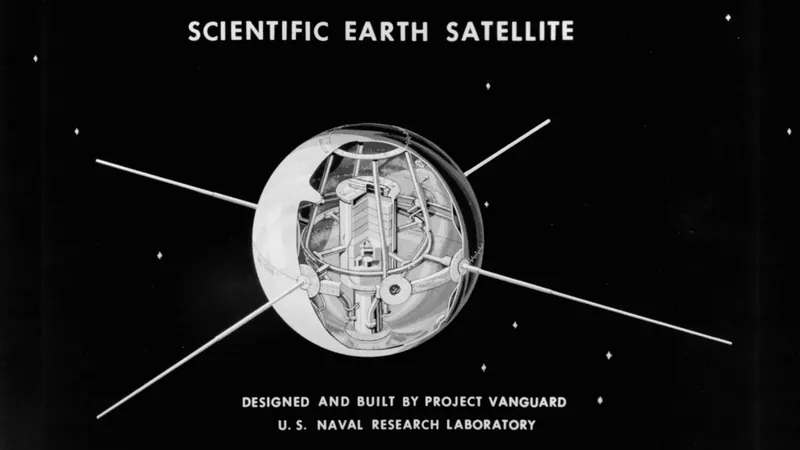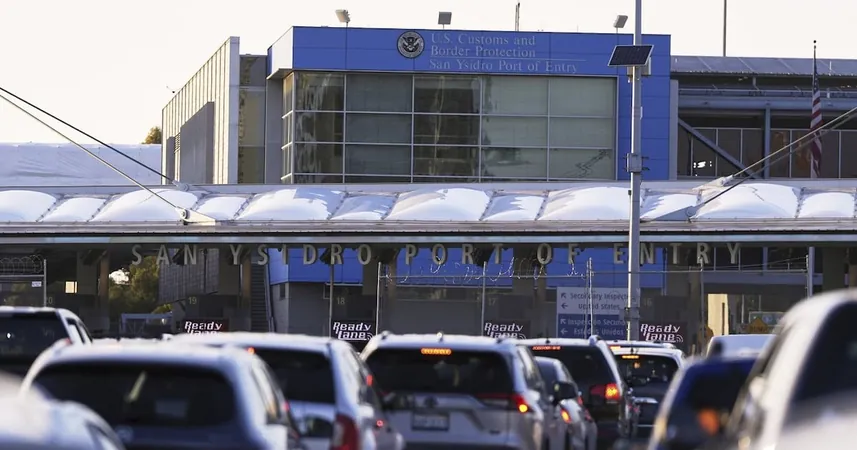
Historic Space Treasure: The Quest to Retrieve Vanguard 1, Earth’s Oldest Satellite!
2025-04-04
Author: Emma
The Dawn of the Space Age
In the revolutionary 1950s, during the intense Space Race, the world watched in awe as the Soviet Union launched Sputnik 1 – the first artificial satellite to orbit Earth – on October 4, 1957. This moment sent shockwaves through the U.S. and ignited a fierce competition for supremacy in space exploration. America's initial foray into satellite launches suffered a humiliating setback later that year when the Vanguard rocket failed spectacularly.
Yet, America rebounded with the successful launch of Explorer 1 on January 31, 1958. Just a few short months later on March 17, 1958, Vanguard 1, the second U.S. satellite, finally made it into orbit. Remarkably, while Explorer 1 re-entered Earth's atmosphere in 1970, Vanguard 1 has continued its journey through our skies for an astonishing 67 years!
Owned and operated by the Naval Research Laboratory (NRL), Vanguard 1 was a pioneering feat in technology, being the first satellite to harness the power of solar cells. Currently, it orbits Earth in an elliptical trajectory that spans from approximately 410 miles (660 kilometers) at its closest approach to an impressive 2,375 miles (3,822 kilometers) at its furthest point.
The Bold Proposal: Bringing Vanguard 1 Back Home!
Recently, a creative team of aerospace engineers, historians, and writers put forth innovative ideas on how to retrieve Vanguard 1 for a closer examination. Presenting at a science and technology conference, they described this pioneering satellite as a "time capsule of the Space Age." Their suggestions, though not official plans from their company Booz Allen Hamilton, showcased the hope and excitement around this bold endeavor.
According to aerospace analyst Matt Bille, this wouldn’t be the first effort to recover an old satellite, but they anticipate that the presence of capable entities may spur interest due to Vanguard 1’s historical significance. Although the satellite ceased transmitting in 1964 when its solar cells could no longer power its transmitter, its orbital position remains well-documented thanks to publicly available tracking data.
Using this tracking information, advanced sensors could ascertain Vanguard 1's present condition and possibly determine if it is still intact, spinning, or tumbling in space after decades of exposure.
Insights from the Past: What Can We Learn?
If successful, the recovery of Vanguard 1 holds immense value for scientists. Bille noted the potential to study the satellite's solar cells, batteries, and materials, as well as documented damage from micrometeorite impacts over time. This mission could very well stand as the first of its kind in retrieving an exposed spacecraft, and its findings could illuminate the effects of long-term exposure to space environments.
The retrieval operation would likely involve aerial imaging before making the crucial decision of whether to extract the satellite. Furthermore, it could be repositioned into a lower orbit or transported to the International Space Station for its journey back to Earth, paving the way for display at iconic institutions like the Smithsonian National Air & Space Museum.
The Road Ahead: A Unique Challenge Awaits
However, the mission will not be without challenges. Vanguard 1, a small aluminum sphere weighing only three pounds (1.46 kg) and measuring 15 centimeters in diameter, requires a delicate approach. An entity with an interest in space heritage, similar to entrepreneur Jared Isaacman or Blue Origin's Jeff Bezos, could step in to fund this monumental mission.
The potential for advancements in space repositioning technology and invaluable lessons for materials engineers and space historians makes this proposed mission particularly exciting. As Bill Raynor from the NRL notes, the satellite’s long-term tracking has provided critical information that has contributed to our understanding of the Earth’s shape and physics.
Imagine the knowledge we could gain by bringing Vanguard 1 back to Earth! This mission would mark a significant milestone in space exploration, enhancing our understanding of both history and science. Are we on the brink of yet another monumental space adventure? Only time will tell!









 Brasil (PT)
Brasil (PT)
 Canada (EN)
Canada (EN)
 Chile (ES)
Chile (ES)
 Česko (CS)
Česko (CS)
 대한민국 (KO)
대한민국 (KO)
 España (ES)
España (ES)
 France (FR)
France (FR)
 Hong Kong (EN)
Hong Kong (EN)
 Italia (IT)
Italia (IT)
 日本 (JA)
日本 (JA)
 Magyarország (HU)
Magyarország (HU)
 Norge (NO)
Norge (NO)
 Polska (PL)
Polska (PL)
 Schweiz (DE)
Schweiz (DE)
 Singapore (EN)
Singapore (EN)
 Sverige (SV)
Sverige (SV)
 Suomi (FI)
Suomi (FI)
 Türkiye (TR)
Türkiye (TR)
 الإمارات العربية المتحدة (AR)
الإمارات العربية المتحدة (AR)